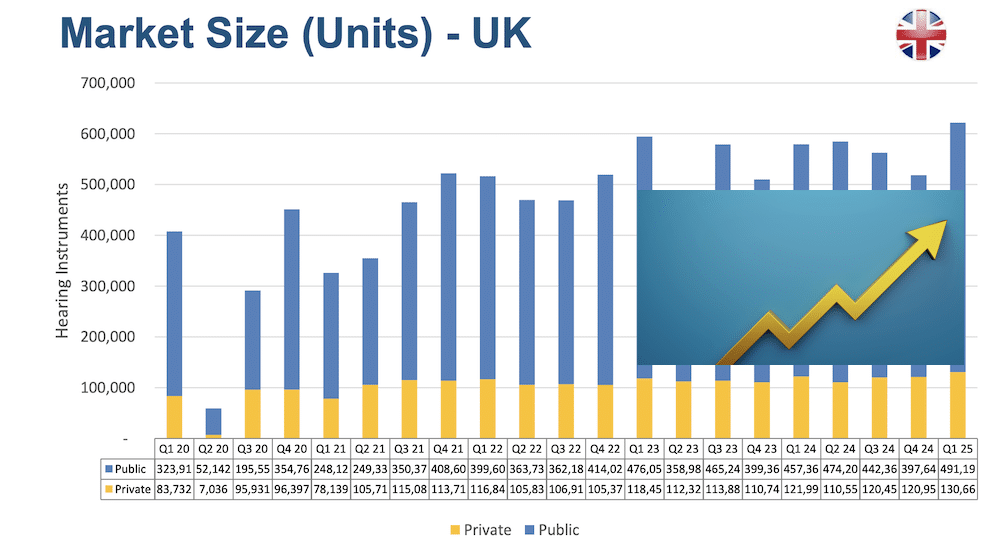“Lithium-ion technology brings more freedom”
EUHA2016
Instead of having a Siemens stand atthis year’s EUHA congress, Sivantos waspresent with a Signia stand. Under theslogan “Welcome to the Future”, threeinnovations were placed centre stage.

To find out what they were and whatnew features are involved, we talked toChristian Honsig, CEO of Sivantos GmbH.
Mr. Honsig, the slogan on the Signia stand is“Welcome to the Future”. What is this about?
Honsig: Under the slogan “Welcome to the Future”, we haveplaced three promising innovations centre stage. In theRIC area, this is Cellion with lithium ion technology, in theITE area, Silk, that works without individual molding andthus promises an immediate hearing experience withouta waiting time. And, as a third topic, we are highlighting“TeleCare“, an open, online platform to strengthen thelink between hearing aid specialists and end users.
Let’s first talk about lithium ion technology, whichyou are offering with Cellion hearing systems. Unlikethe product offered by one of your competitors,Cellion can be loaded inductively. How would youdescribe the advantages of this wireless chargingpossibility?
Honsig: We have long-term experience with battery technologyand chargeable devices. We have offered contactcharging for many generations of devices and withwireless charging, we have several advantages. Withoutcharging contacts, we can have closed casing. Thismakes the device more robust and facilitates handling.Cellion is very convenient because the device switchesoff automatically when placed in the charger, dries off,and automatically switches back on when taken out.And for the hearing aid professional, it offers maximumaudiology of e2e 3.0 to CROS, like in the Primaxproducts. There are two charging phases: one withfast charging that lasts only 30 minutes and provides 7hours of autonomy. Complete charging takes 4 hours,guaranteeing 24 hours of run time, measured withpermanent streaming and HP receivers, in other wordsunder full load. We consider that the battery will last sixyears.
Was the battery an in-house development?
Honsig: Of course, we buy the cells, like the batteries. What isinteresting in lithium ion technology is that it brings morefreedom, for example in shape and design. We are nolonger bound by the traditional round form of a button cell.
How has the use of lithium ion cells changed thevoltage in the hearing system?
Honsig: Inside the power module in a lithium ion cell, there is 3.8volts, but our technology reduces this higher voltage tothe standard hearing aid voltage of 1.2 volts.
Could the higher voltage open doors for otherpossibilities?
Honsig: We have seen extremely rapid development of featuresin hearing aid functionalities. We have done this for yearswith the exact same sized batteries with the same power.That had to come to an end at some point. And withintelligent energy management, we are now of coursepreparing so that performance and comfort features are also not limited in the future. We are the industry leaderwhen it comes to energy efficiency, thanks to consistentarchitecture at the chip level. This naturally offers usmany possibilities such as CROS solutions with lithiumion technology, continuous streaming of audio data, andshort response times.
Let’s move on to Silk, the new ITE device fromSignia. You mention that no molding is neededand that the system can be placed directly into theclient’s ear. How does that work?
Honsig: The golden path in our sector is fitting of BTE devices.These can be fitted directly for the client, giving him orher an immediate hearing experience. And that worksvery well. The conventional ITE process, on the otherhand, serves one of the priority wishes of the wearer, i.e.discretion, but is also more expensive and does not offerthe possibility of an “immediate” hearing experience.And this is precisely why we developed Silk. The namewas in fact inspired by the first test users. The shell thatensures a secure hold and a comfortable fit for the smallCIC was described by these testers as silky. So that’show we came up with the name. With Silk, we can fulfilthe client’s desire for an immediate hearing experienceeven with an ITE device, and in a comfortable way.
Another new feature at Signia is TeleCare. What isthat precisely?
Honsig: Our aim, like that of the hearing aid specialist, is to fithearing aids for as many customers as possible, withhigh satisfaction. When we look at the fitting process,from my point of view, the critical phase is the timebetween the first and second appointments – especiallywith first-time fitting. In the store, the clients haveprofessional support and advice from a specialist. Butthen they find themselves in a whole new world. Soundsare experienced differently; they have to get used tohandling the device, and use it the next morning forthe first time. The batteries need changing; you needto connect to the TV and to your smartphone, and soon. Some people have no problems with this, but othersneed help. The worst is when negative impressionsdevelop during this time and questions arise that arenot answered in due course. This can lead to failure offitting. To make this blind spot visible to the hearing aidspecialist, we developed the TeleCare tool. TeleCare isa cloud-based solution enabling rapid communicationbetween the specialist and the end user via themyHearing app, developed on the basis of the sametechnology we used for our TouchControl system.
Your goal, as you mentioned to us in an interview,is market leadership. How far are you on the roadto the top?
Honsig:We are making good ground and are ahead of ourplans.


